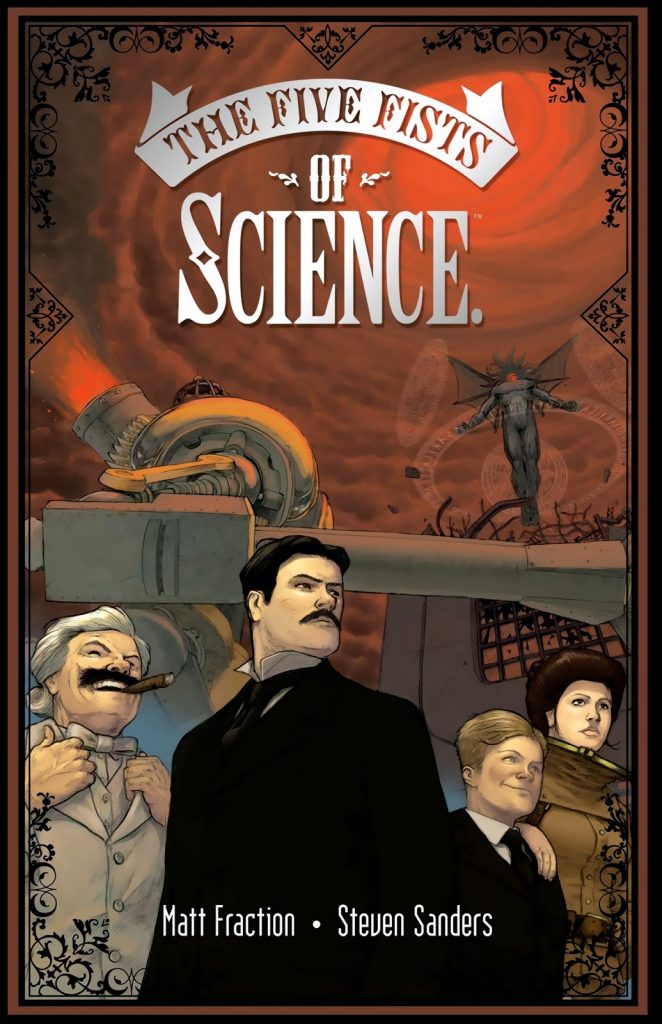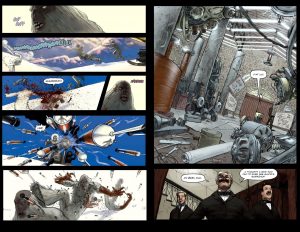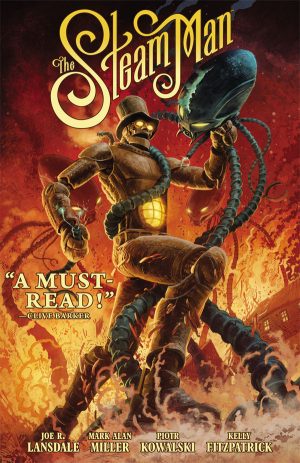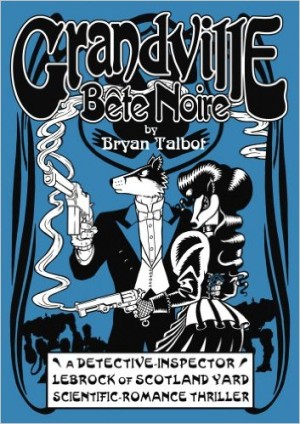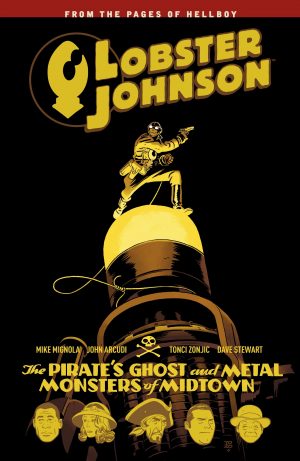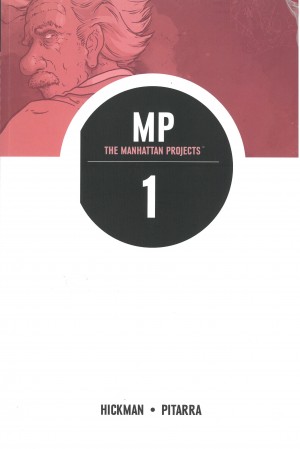Review by Frank Plowright
e ComicIn 2017 Image re-released this curiosity from early in Matt Fraction’s career, correctly reasoning that many of might have missed it the first time round. Does it match his later work?
With Europe on the brink of war during the first decade of the twentieth century, a disgruntled and broke Mark Twain meets maverick inventor Nikolai Tesla and determines that between them they can prevent conflict. Financiers J. P. Morgan and Andrew Carnegie meanwhile have a project that they intend to see through to fruition with the help of Thomas Edison. Setting The Five Fists of Science in the 20th century’s first decade gives Fraction a wide selection of larger than life historical personalities to work with and Steven Sanders a steampunk science aesthetic to work with. It should provide a winning combination, but doesn’t impress as intended, and that’s a shame as there’s much to like.
The Five Fists of Science strikes a welcoming tone from the start, with Twain’s sardonic introduction parodying the liberties taken by film companies in presenting ‘true’ stories, followed by brief biographies taking a similar tone. To begin with Fraction’s enjoying himself, throwing in other period references while caricaturing his leads and moving events forward at a brisk pace. A callow Giuseppe Marconi is funny, and the manipulative Twain carries the story a long way, but too many others don’t transcend a single characteristic, all too easily falling into vaudeville villainy. By the time the Lovecraftian horrors appear The Five Fists of Science is effective pulp adventure, but without depth, while the contemporary social parallels hinted at the start or any sniff of radicalism has long since disappeared.
Sanders hits the big moments, mixing horror and science, and in places his cartoon expressions work very well. In others the looseness of the figures and their features is a little slack, but he’s generally effective in presenting a byegone age and his designs for Tesla’s machinery are impressive. These have a nice retro look and are credible enough to convince as working technology of the era.
It’s interesting to speculate what the more mature Matt Fraction might make of the same premise, but the writer then staring out was imaginative enough to come up with it in the first place without being able to see it to full fruition.
